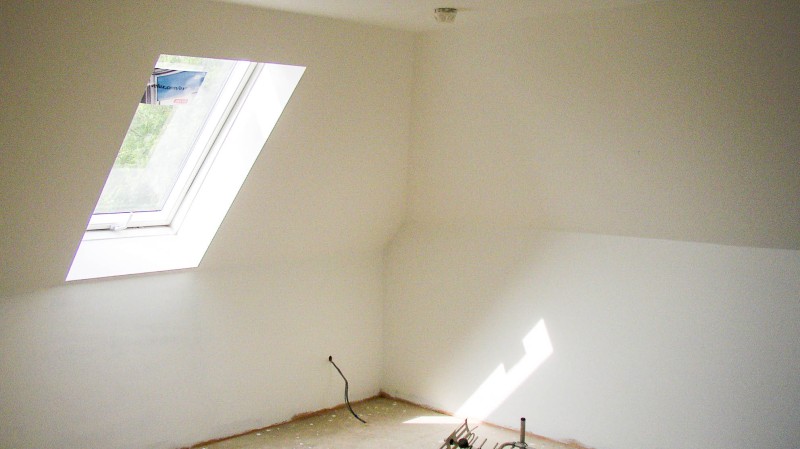You are here: What to do if your planning application is rejected
Permission for your dream home extension is going to be refused. What now? We look at your options.
Getting the green light for a home extension, garage or loft conversion can be quick and easy. There are, however, occasions when planning permission is refused which can be extremely frustrating. While you may have thought it was a great design that ticked all the planning boxes, it still didn’t get the thumbs up. Don’t despair. You have options.

Negotiate while the application is running
The planning application process usually takes about eight weeks. During this time every application submitted to a local planning authority must go out for public consultation. Objections to your building project may be raised by the parish council, highways authority, council tree officer and other consultees. A neighbour may be worried your proposed extension will block their sunlight, for instance.
This public consultation stage is useful for gauging reaction to your project. Establish a dialogue with your local planning officer, though this can be tricky as many have huge caseloads. If objections are made that could sway the decision, you may be able to tweak your plan during the application process. For instance, reduce the scale of your extension so it won’t overshadow your neighbour’s property.
But always check with the planning officer if there is time to make any adjustments or add extra bits of information, especially if it is near the end of the eight-week period. The officer may agree to an extension of time so people can be re-consulted but this will vary from council to council.
Withdraw and submit a revised version
Your second option is to withdraw the application before it can be refused and submit a revised version. This may be the best option if an issue has come to light that means it will be refused but you or your architect can see a solution. The revised application should address any valid objections raised and take on board the planning officer’s feedback.
Again, talk to your local planning officer and keep other council officers (for example tree or historic buildings) in the loop, copying them into emails. Ask if making certain changes will make a difference and likely to lead to planning permission being granted.
Be aware you may not be reimbursed your £172 planning application fee if you withdraw an application. It depends on how far it has progressed. Talk to your local planning authority.
Let it go to refusal and resubmit
Refusal isn’t necessarily always a bad thing. Some people fear a blot on their planning record. But if you don’t withdraw your application and let it be refused, it forces the planning officer to carefully consider your application, write a detailed report and set out reasons for refusal. This means you will know exactly what the council is concerned about, so you can then think about whether you want to make a new application or appeal. Any issues raised by your planning officer in the initial refusal should be dealt with in the amended application to boost chances of success.
If your application has been refused, you automatically get a ‘free go’ and can submit revised proposals free of charge within one year of the first application.
Go to planning committee
If you want to take the final decision away from a planning officer, you can try and get it to planning committee. This means your application will be decided by a majority vote of elected councillors sitting on the planning committee instead. Most planning applications are determined by planning officers using their delegated powers. Individual councils have their own procedures for deciding what goes to committee. In many cases, if you can persuade your local councillor to ask for the application to go to committee, it will happen.
Occasionally, elected members go against their officers’ professional advice. So, even if your application is recommended for refusal, there is a chance it may be approved, but it is a gamble. Don’t ask for an application to go to committee unless you have a strong case, have a councillor in your corner and are prepared to do a lot of lobbying.
Appeal
When the council refuses your planning application, it must give written reasons. If you think the decision is unfair, you can appeal to the Secretary of State as a last resort. Your application will then be out of the authority’s hands. The deadline for submitting an appeal is 12 weeks of the date of the decision notice. If you miss this window, you lose your right of appeal.
Only one in four appeals were successful between 2018 and 2020, according to the Planning Inspectorate. It’s only worth going down this route if you are sure your project meets planning guidelines.
Details on how to appeal will be sent by the council when it refuses your application. You will be asked to write down all the reasons why you think the refusal was unfair and permission should be granted. Focus on planning issues and be as detailed as possible.
It may help to hire a professional planning consultant with expert knowledge of relevant planning policies both national and local. They will scrutinise the officer’s decision notice and may be able to spot weaknesses within the refusal or strengths in your application that could be better highlighted.
An independent planning inspector will visit your home. Between two to six weeks after the site visit, the inspector will make their decision. From start to finish, an appeal takes about five months.
Read the letter carefully. If the planning inspector allows your appeal, planning permission will be granted. If your appeal is dismissed, the reasons given can help if you decide to make a new application
Unlike a planning application, there are no fees if you go down the appeal route. However, this option could cost thousands of pounds if you hire a planning consultant. If the appeal is successful, however, and the council’s initial refusal overturned, you might consider it money well spent.
Back to the drawing board?
There are times when it’s folly to challenge a council refusal at appeal. For example, when an application is obviously contrary to published council policy.
If you can amend your project to get the application approved – and it won’t spoil your plans too much - it’s much quicker and more straightforward than appealing.
Remember a refusal is not the end of the road. You do have options. Seek professional advice from a local architect or planning consultant as to your next step.
If you are looking to make some home improvements, you may find some of these services useful
Builders
Find local help with a building project
Building Regulations
Find details of local experts who can help with Building Regulations
Architectural Design Services
Find local Architectural Design experts
Structural Inspections
Find an expert to carry out a structural inspection
Building Surveys
I want a local surveyor to do a Building Survey for me
Choose which Architectural service you require
If you are not sure which service you require, check out the options available...


